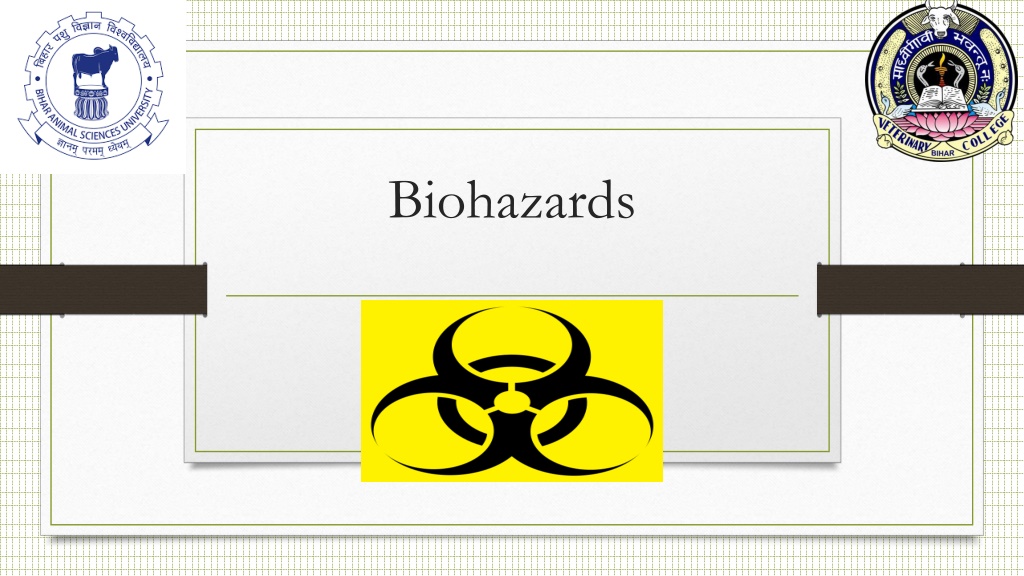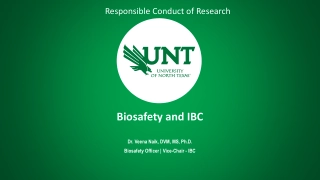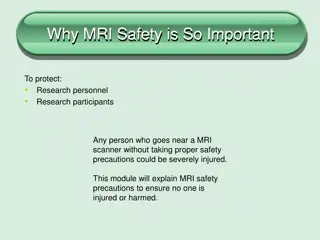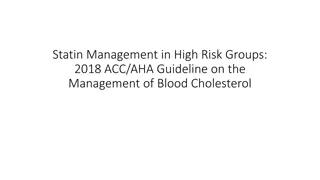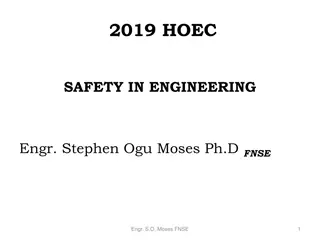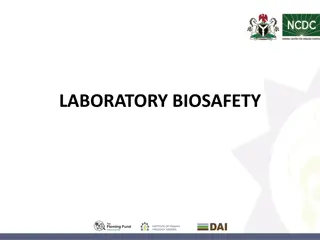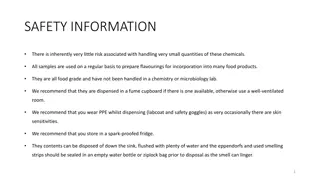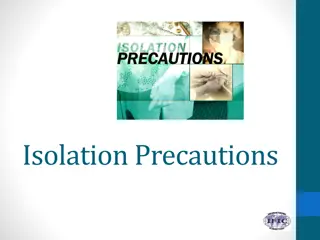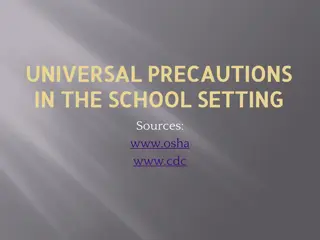Understanding Biohazards: Levels, Safety Precautions, and Risk Groups
Biological hazards or biohazards pose risks to human health through organisms like bacteria, viruses, parasites, and fungi. Biosafety and biosecurity measures are crucial to prevent exposure, with different biosafety levels and risk group classifications guiding safety protocols in laboratory settings.
Download Presentation

Please find below an Image/Link to download the presentation.
The content on the website is provided AS IS for your information and personal use only. It may not be sold, licensed, or shared on other websites without obtaining consent from the author. Download presentation by click this link. If you encounter any issues during the download, it is possible that the publisher has removed the file from their server.
E N D
Presentation Transcript
Biohazard: Biological hazards refer to organisms or organic matters produced by organisms that are harmful to human health. These include bacteria, virus, parasites, fungi and their toxins. These may cause harm to human in the form of infections, allergy and poisoning. Biosafety: The containment principles, technologies and practices that are implemented to prevent the unintentional exposure to pathogens and toxins, or their accidental release Biosecurity: Control of accidental and deliberate release of biohazardous material
Biohazard levels, more commonly referred to as biological safety levels or biosafety levels, are classifications of safety precautions necessary to be applied in the clinical microbiology laboratory depending on specific pathogens handled when performing laboratory procedures. Laboratory facilities are designated as basic Biosafety Level 1, Basic Biosafety Level 2, Containment Biosafety Level 3, Maximum containment Biosafety Level 4.
Biosafety level designations are based on a composite of the design features, construction, containment facilities, equipment, practices and operational procedures required for working with agents from the various risk groups. Biohazardous Agents may be classified by Risk Group (RG) that are required biosafety precautions. The risk group classification is used for laboratory work only.
Risk Group 1 (RG1)/Biohazard level 1 Agents that are not associated with disease in healthy adult humans. Example: Bacillus subtilis, canine hepatitis, Escherichia coli etc. Handling these agents require minimum safety measures like gloves, masks etc.
Risk Group 2 (RG2)/Biohazard Level 2 Agents serious. Preventative or therapeutic interventions are often available. E.g., hepatitis A, B, and C, influenza A, Lyme disease, Salmonella, mumps, measles, scrapie, dengue fever. Laboratory personnel can carry out diagnostic tests on the specimens but need to wear gloves, facial protection, and a gown. Additionally, standard precautions at this level should be applied when handling clinical samples from the current outbreak investigations of acute respiratory distress syndrome (ARDS) caused by COVID-19.. that are associated with human disease which is rarely
Risk Group 3 (RG3)/ Biohazard Level 3 Agents that are associated with serious or lethal human disease. Preventive or therapeutic interventions may be available High individual risk Low community risk. Example: West Nile virus, SARS virus, tuberculosis, typhus, Rift Valley fever, HIV, yellow fever, and malaria.
Risk Group 4 (RG 4)/ Biohazard Level 4 Agents that are likely to cause serious or lethal human disease Preventive or therapeutic available High individual risk High community risk Example: Bolivian and Argentine hemorrhagic fevers, Marburg virus, Ebola virus, hantaviruses, Lassa fever virus and Crimean-Congo hemorrhagic fever. interventions are not usually
There are no bacteria in this group. Only specific persons can work with these viruses. It requires them to wear a positive pressure personnel suit, with a segregated air supply. There is no treatment available for these viruses, and extreme isolation precautions are mandatory.
The Biohazard Symbol with dimensions as defined in https://archive.org/stream/federalregister39kunit#page/n849/mode/1up
